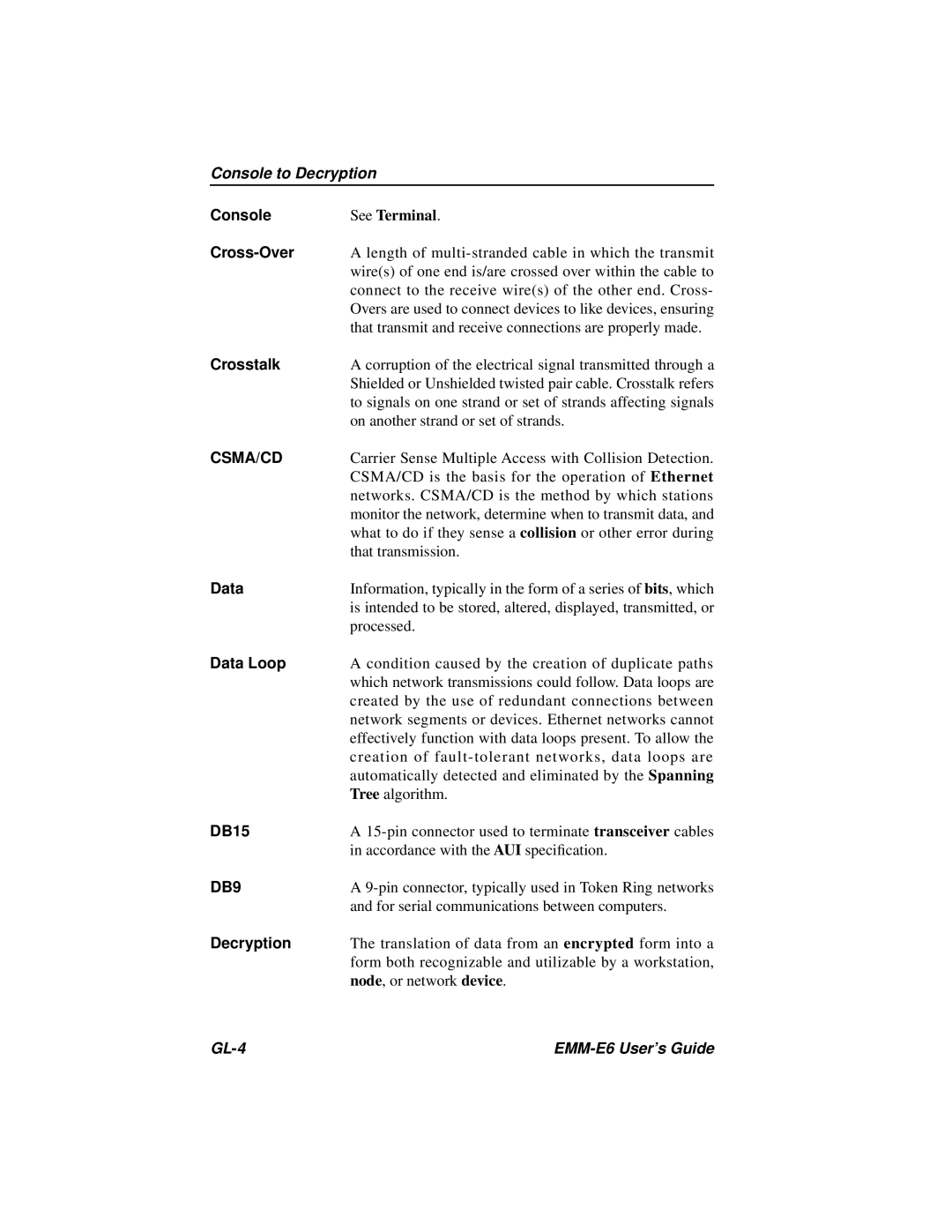Console to Decryption
Console | See Terminal. |
| A length of |
| wire(s) of one end is/are crossed over within the cable to |
| connect to the receive wire(s) of the other end. Cross- |
| Overs are used to connect devices to like devices, ensuring |
| that transmit and receive connections are properly made. |
Crosstalk | A corruption of the electrical signal transmitted through a |
| Shielded or Unshielded twisted pair cable. Crosstalk refers |
| to signals on one strand or set of strands affecting signals |
| on another strand or set of strands. |
CSMA/CD | Carrier Sense Multiple Access with Collision Detection. |
| CSMA/CD is the basis for the operation of Ethernet |
| networks. CSMA/CD is the method by which stations |
| monitor the network, determine when to transmit data, and |
| what to do if they sense a collision or other error during |
| that transmission. |
Data | Information, typically in the form of a series of bits, which |
| is intended to be stored, altered, displayed, transmitted, or |
| processed. |
Data Loop | A condition caused by the creation of duplicate paths |
| which network transmissions could follow. Data loops are |
| created by the use of redundant connections between |
| network segments or devices. Ethernet networks cannot |
| effectively function with data loops present. To allow the |
| creation of |
| automatically detected and eliminated by the Spanning |
| Tree algorithm. |
DB15 | A |
| in accordance with the AUI specification. |
DB9 | A |
| and for serial communications between computers. |
Decryption | The translation of data from an encrypted form into a |
| form both recognizable and utilizable by a workstation, |
| node, or network device. |
|
